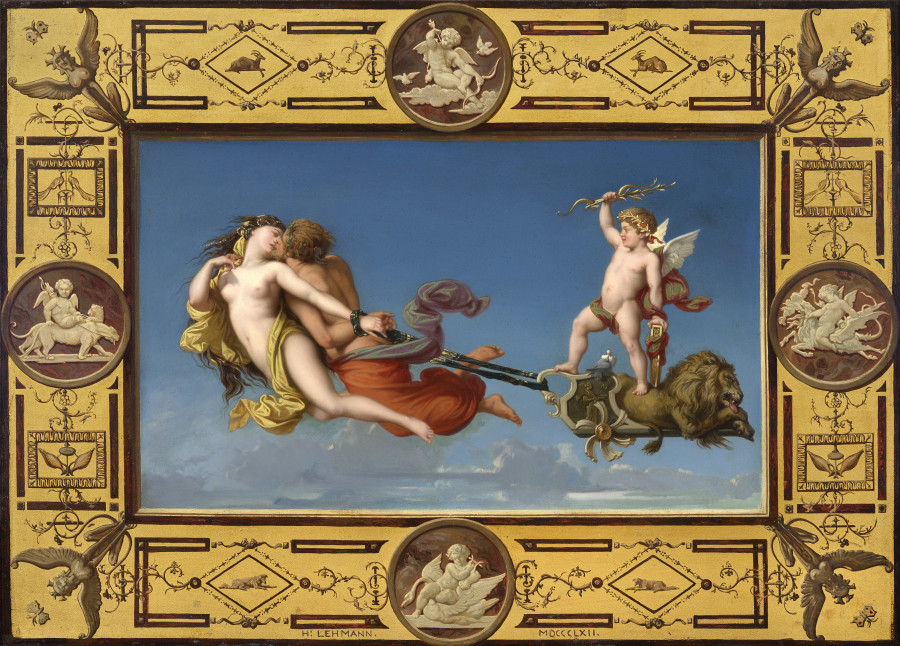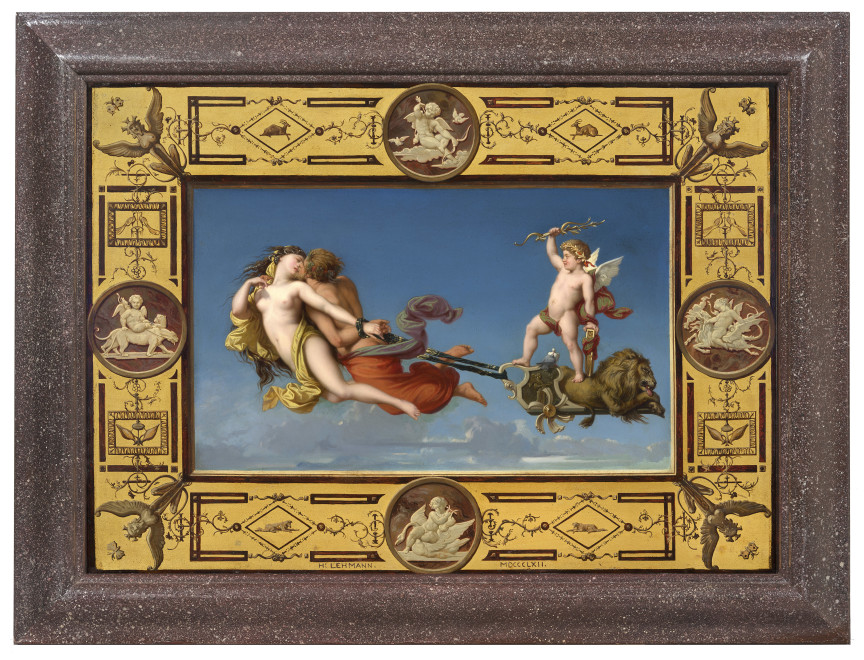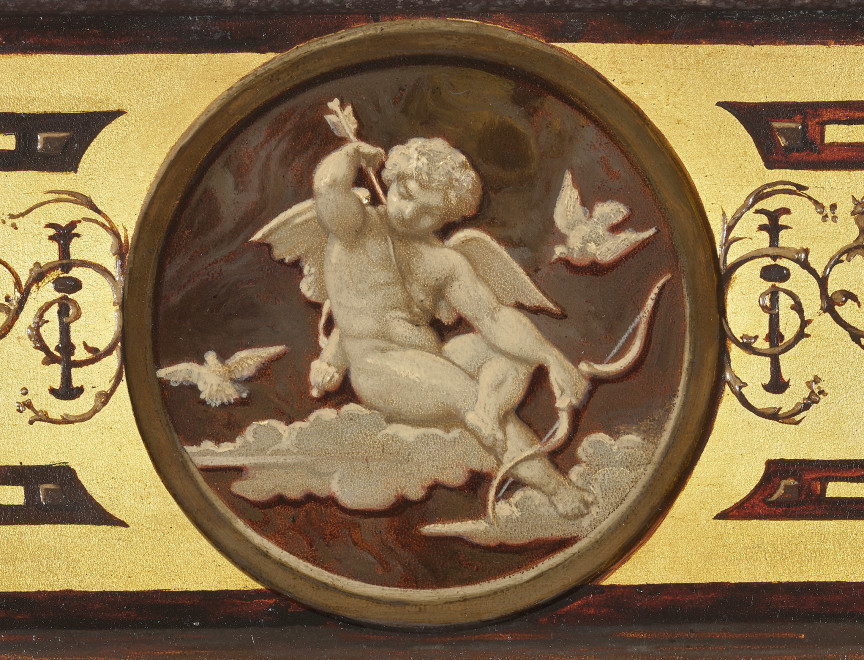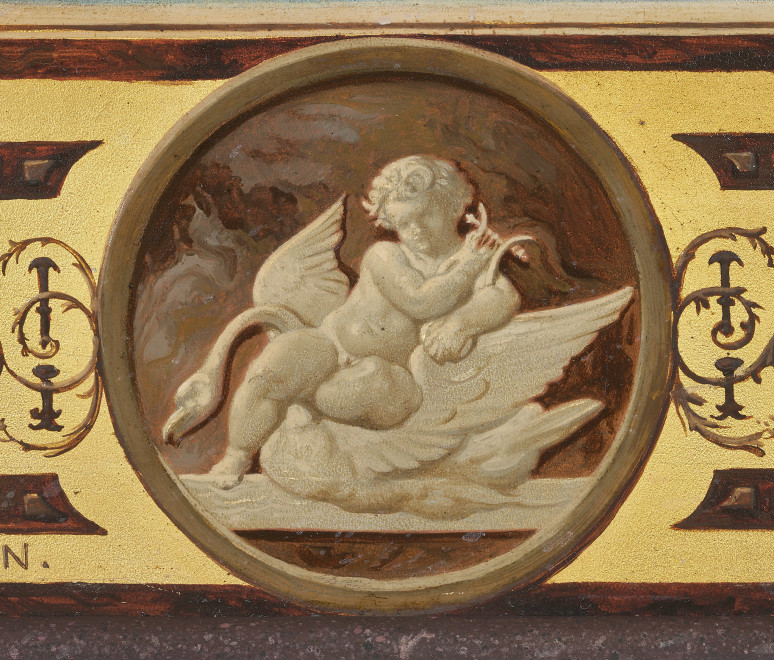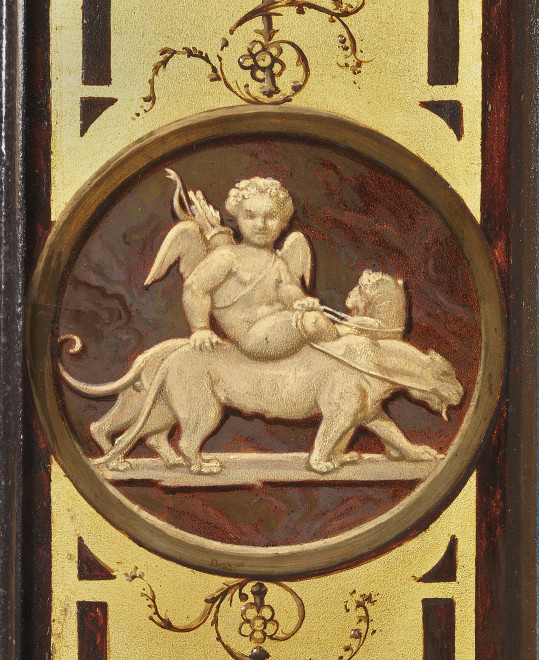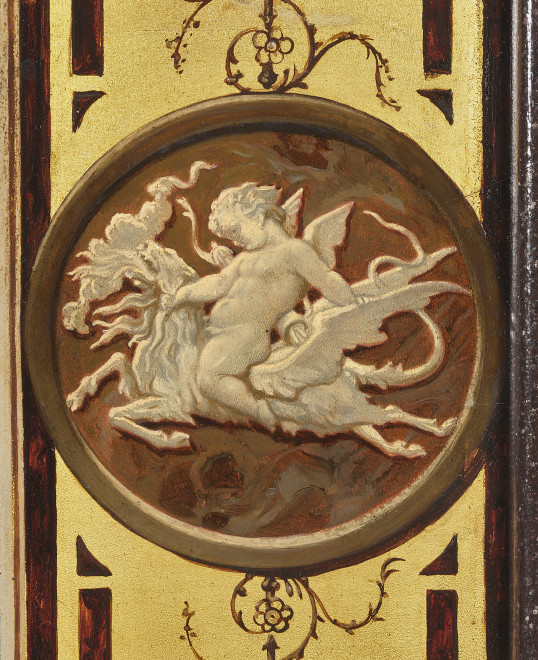Lehmann’s 1862 Eros Triumphant should be seen as the culmination of decades of training for Academic perfection; after all, Lehmann was one of Ingres’s most gifted students.
Provenance
Edmund Ernst Leopold Schlesinger Benzon, London, 1864
Thence by descent to his wife Elisabeth (and her Sale, Christie’s Manson & Woods, London, May 1, 1880, lot 44)
Christian Humann, New York
Shepherd Gallery Associates, New York
Wheelock Whitney & Company, New York
American Private Collection
Exhibited
London, Royal Academy of Arts, 1863, no. 699
Paris, Cercle de l’Union des Arts, rue de Choiseul, 1864
New York, Shepherd Gallery, Ingres and Delacroix through Degas and Puvis de Chavannes. The Figure in French Art. 1800-1870, 1975, no. 71 (reproduced p.172)
Chapel Hill, NC, Ackland Art Museum, French Nineteenth Century Oil Sketches: David to Degas, 1978, no. 46
Philadelphia, Museum of Art; Detroit, Institute of Arts; Paris, Grand Palais, L’Art en France sous le Second Empire, 1978-1979, no. 244, reproduced p. 380
New York, Wheelock Whitney & Company, Nineteenth Century French Paintings, 1983, no. 15 (illustrated)
Literature
Laurent Tisseron and Charles Laurent, “M. Henri Lehmann, Peintre d'histoire et de portraits,” Annales historiques et biographiques, 1864, vol. 2
Victor Frond, Panthéon des illustrations françaises du XIXe siècle, Paris, Pilon, 1865, no. 33, p. 44
Auguste Baluffe, “Henri Lehmann. 1814-1882,” L’Artiste, 52e année, no.1, May 1882, p. 572
Marie-Madeleine Aubrun, Henri Lehmann : 1814-1882. Catalogue raisonné de l'œuvre, 1984, vol. I,
no. 473 and illustrated, vol. II p.118.
Catalogue note
Henri Lehmann’s career coincided with a period of unprecedented prosperity in France during the Second Empire. As a student of Ingres and a leading proponent of Academic art (he became a Professor at the École des Beaux-Arts in 1875), Lehmann embodied the traditional style that was popular with the country’s reigning elite, including the Emperor and his wife, Eugénie. He was also one of the most sought-after portrait painters of the time, depicting such luminaries as Chopin, Franz Liszt and Stendhal.
Painted in 1862, Eros Triumphant, with its mythological subject, sensual female nude and polished surface,was representative of the genre of painting that decorated the opulent private residences that were springing up in Paris’s most prestigious neighborhoods. It was also the type of painting that was always a winner at the annual Salon. In fact, it was at the Salon of 1863, that Alexandre Cabanel and Paul Baudry each exhibited paintings of luscious female nudes; Cabanel’s Birth of Venus (Musée d’Orsay, Paris) was purchased by the Emperor himself, while Baudry’s The Pearl and the Wave (The Prado, Madrid) went to Eugénie. It was not lost on the art critics of the time that the Salon of 1863 included an abundance of female nudes masquerading as mythological Venuses. Such well-known writers as Émile Zola, Maxime du Camp and Jules-Antoine Castagnary commented that the Venus paintings by Cabanel and Baudry were essentially “fig leaves” and should not be considered true art as the intention was clearly to cater to the tastes of the potential purchaser, who was most likely a well-to-do, “homme d’affaires”. Even Jean François Millet, who submitted his controversial Man with a Hoe that year, remarked that Cabanel’s and Baudry’s paintings were intended primarily for the passions of bankers and stockbrokers. (See Nicole Myers, “Le grand art s’en va”: la peinture au Salon de 1863,” Spectaculaire Second Empire, exh. cat, Paris, 2016, p. 227). Interestingly, landscape painter, Jean- Baptiste-Camille Corot also submitted a female nude to the 1861 Salon (Le Repos, The National Gallery, Washington, DC).
This is the cultural and societal background in which to place Lehmann’s 1862 Eros Triumphant, however it should also be seen as the culmination of decades of training for Academic perfection; after all, Lehmann was one of Ingres’s most gifted students. High above the clouds in a blue sky, Lehmann shows a young Cupid astride a lion, who serves as his airborne chariot. He is pulled through the sky by a couple embracing (Venus and Mars?), their hands bound together by the reins of the chariot that harnesses them. With this subject, Lehmann found an excuse to paint a beautiful female nude, in keeping with the trends of the time. A golden border, opulently decorated in a type of grisaille, frames the figure group. This type of decorative detail corresponds to the opulence of contemporary furniture design, which was so thoroughly outlined in the 2016 exhibition at the Musée d’Orsay, Spectaculaire Second Empire. One can easily imagine Lehmann’s painting installed over a table by French furniture maker, Frédéric Roux.
For the composition of Eros Triumphant, Lehmann may have harked back to his own source from 1839 when he won a First-Class Medal at the 1840 Salon for St. Catherine of Siena carried to her Tomb (Musée Fabre, Montpelier). Each work shows a colorful figure group suspended in the sky and hovering in space; one sacred and one profane. Additionally, the palette of the two works is very similar, and may owe something to Lehmann’s exposure to the German Nazarenes, when he was in Rome with Ingres in the 1830s. However, it was the monumental 16th century fresco cycle, The Love of the Gods by Annibale Carracci installed at the Villa Farnese, which Lehmann would have seen while in Rome, that most likely provided the source for the subject and composition of Eros Triumphant (see L’art en France sous le Second Empire, Paris, exh. cat, 1978, p. 1979, p. 380). In addition, Madeleine Aubrun in her 1984 catalogue raisonné commented that Lehmann’s painting may also have been inspired by the following text from Voltaire, which appeared at the base of a statue of love (1726) to warn against the destructive powers of love:
Qui que tu sois voici ton maître
Il l’est, le fut ou le doit être
The first owner of Eros Triumphant was Lehmann’s brother-in-law, Edmund Ernst Leopold Schlesinger Benzon. He and Lehmann’s sister, Elisabeth resided in London at 10, Kensington Palace Gardens, where we may assume the painting graced the walls of their residence.

